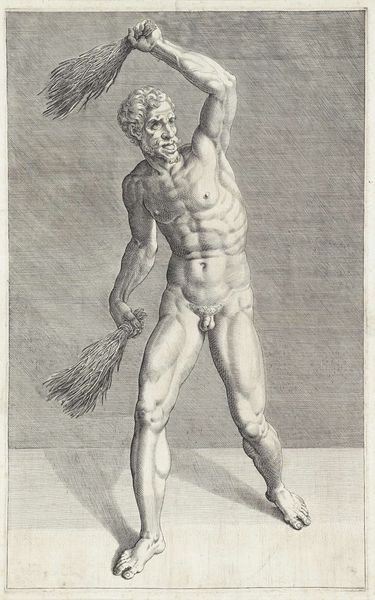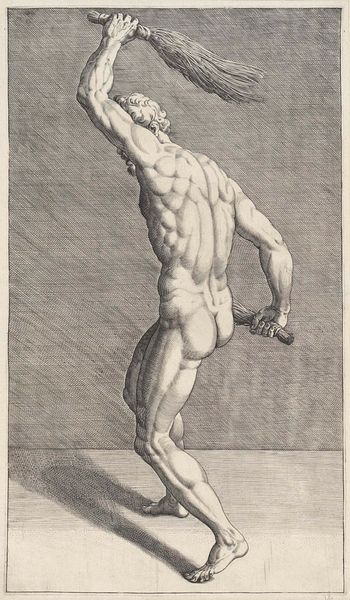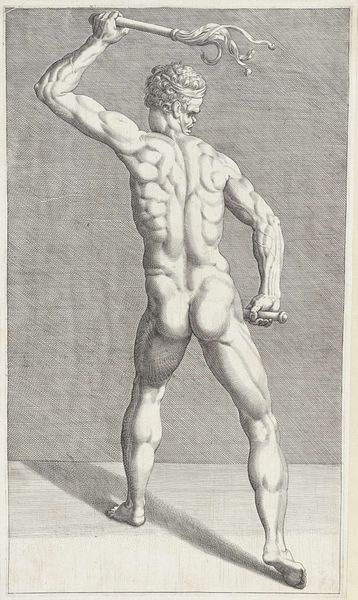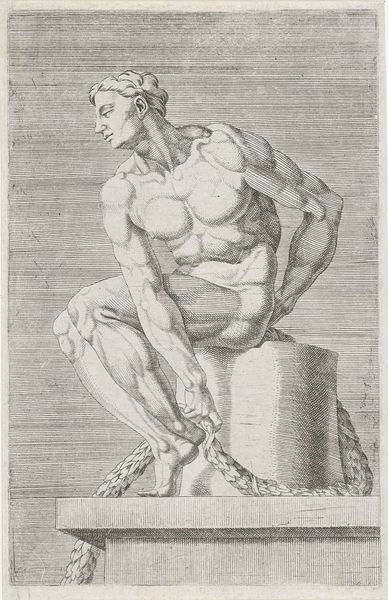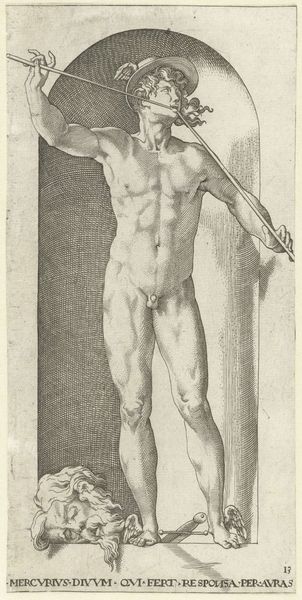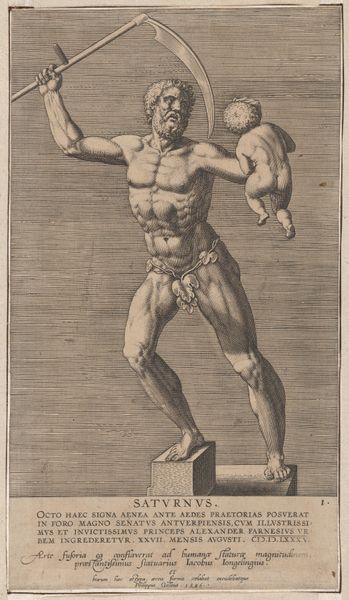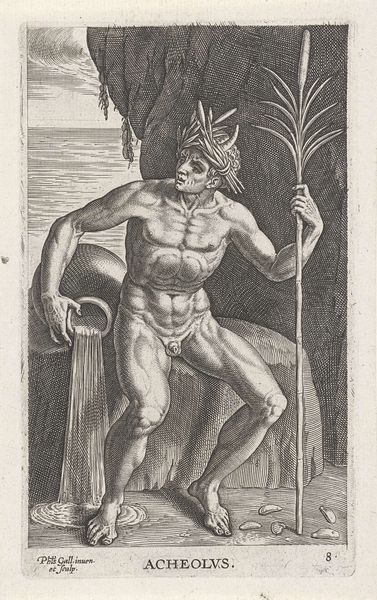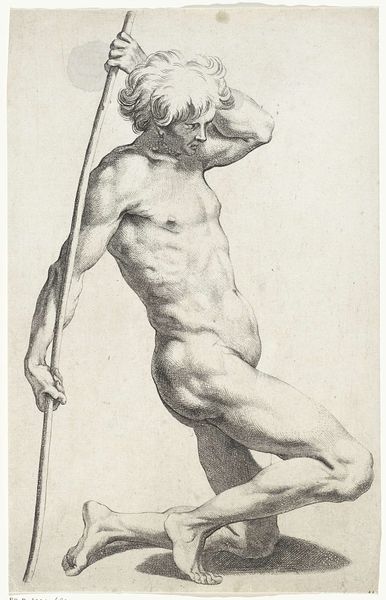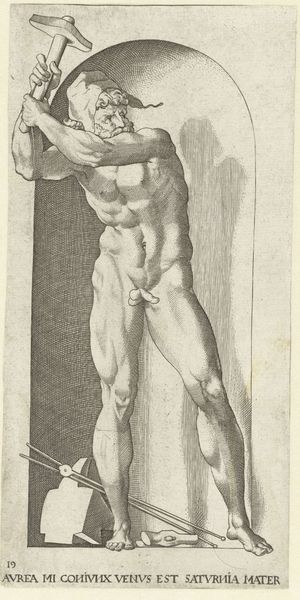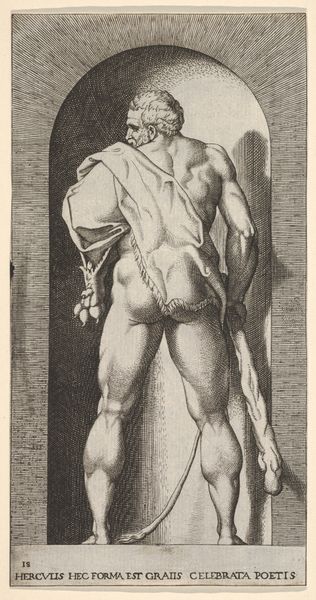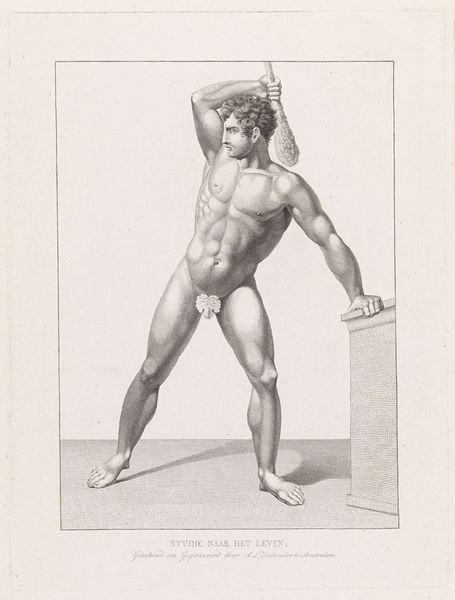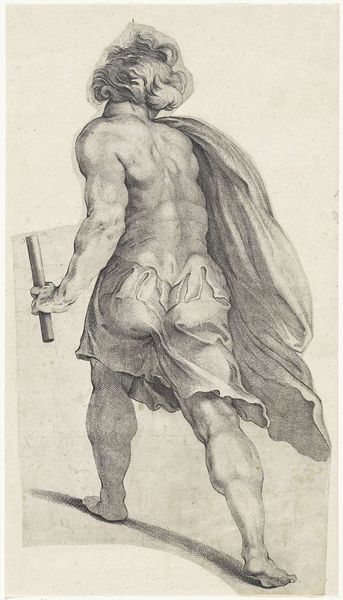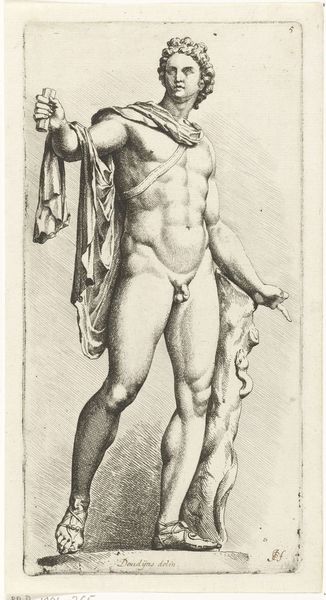
Dimensions: height 502 mm, width 287 mm
Copyright: Rijks Museum: Open Domain
Editor: So, here we have an engraving, "Man met twee gesels," which translates to "Man with two whips." It’s from between 1550 and 1625, by an anonymous artist. There’s a real tension in the figure’s body; you can almost feel the effort he's exerting. How would you interpret this work? Curator: The production of this print involves several key processes. Consider the metal plate used for engraving: copper or possibly steel. The laborious process of incising lines to create this image, think about the physical effort involved. This work reflects the increasing availability and consumption of printed images during this period. Editor: That’s fascinating! It’s easy to overlook the actual physical effort of making something like this. So the act of engraving itself and the resulting proliferation of images were culturally significant? Curator: Exactly. These prints weren’t unique artworks but commodities, made for distribution and consumption. Think about the economic implications. Who could afford them? Where would they have been displayed? Also, note how the idealized physique of the man intersects with existing systems of patronage and workshop production, a dance of aesthetics, skill, and economics. Editor: So, it's less about the individual artist's intent and more about the network of materials, labor, and dissemination? Curator: Precisely. We shift focus from singular genius to a broader understanding of artistic production as a material practice embedded in a specific social context. Editor: I’d never thought about it that way. It gives me a whole new perspective on how to view prints from this period. Curator: Indeed, understanding art through its materials and production opens up so much about the society that created and consumed it.
Comments
No comments
Be the first to comment and join the conversation on the ultimate creative platform.
